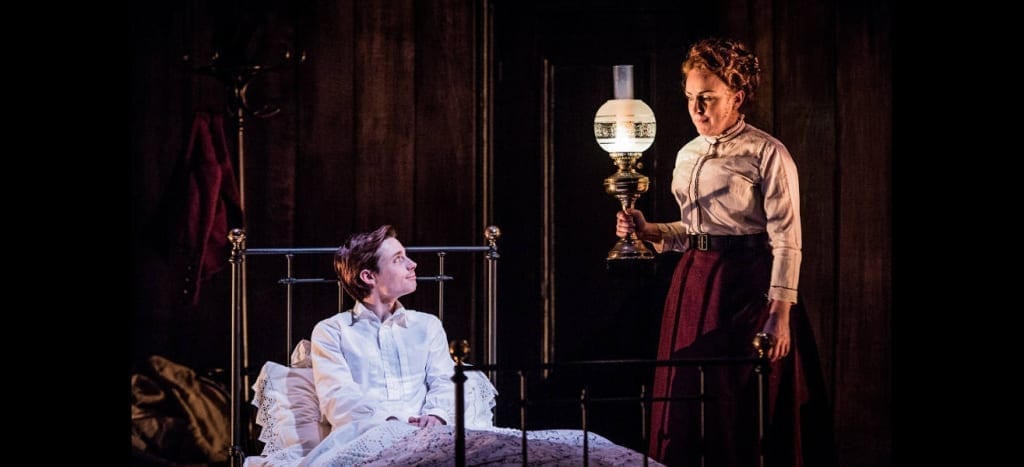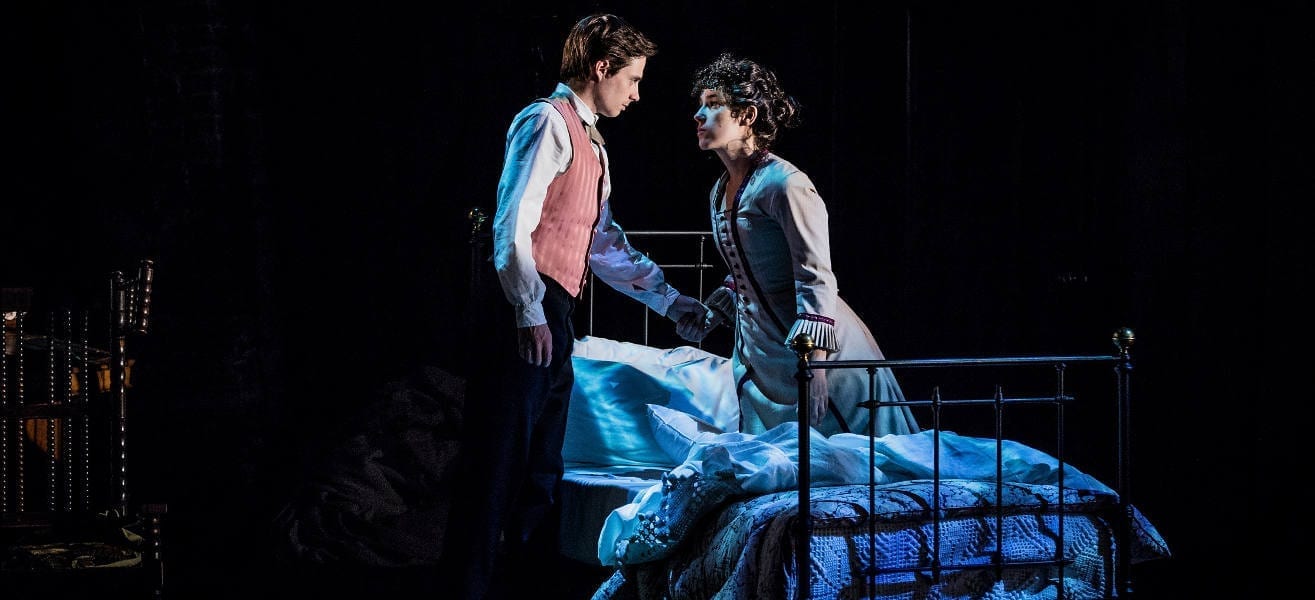Some might think that The Turn of the Screw – originally written by Henry James in 1898 – is as unadaptable as it is outdated. It is, indeed, a difficult source text to adapt for the stage but Tim Luscombe and Daniel Buckroyd’s thrilling production tackles the text head-on to produce an adaptation that keeps the audience on the edges of their seats thanks to constant anticipation and spine-tingling terror.
The tone of tension and confusion begins on entry to the auditorium, as everything on stage is slightly askew, with a titled proscenium arch and floorboards that rise at the back of stage to form a wall. This creates an immediate feeling of unease and discomfort, conveying the sense that both the audience and characters are trapped in this uncomfortable space. The effect is furthered by the opening moments of the play, in which eerie piano music fills the auditorium as a spotlight falls on a cloth-covered object in the centre of the stage. The dust cloth is whipped back apparently by something invisible (an effective theatrical trick on the production team’s part) to reveal a rocking horse, which begins to rock back and forth of its own accord. The proceeding blackout and silence, broken only by the rocking of the horse, sets the uncanny tone for the entire play.

The use of music, sound effects and lighting allow the audience to experience the same level of anxiety as the Governess throughout the play. The play unfolds against a sonic backdrop of echoing cries and screams, tension-building string music, and a disturbing music-box. By far the most effective technique is the use of lighting to accompany the appearance of the ‘ghosts’: whenever one of the apparitions occurs, there is a blinding flash of white light, followed by a swift blackout, and when the lights come back on the figure of either Miss Jessel, dressed in a black dress and veil, or Peter Quint, smiling manically and reaching out to the audience, has materialised on stage. Despite being used several times throughout the play, this effect never loses its impact, even prompting screams from the audience. By layering these sound and lighting effects, the production creates an extremely heightened atmosphere of tension and fear in the audience.
Luscombe and Buckroyd’s adaptation encourages a certain interpretation of the text, rejecting the ambiguity of James’s novella. In the source, it is never clear whether the ghosts are real or the Governess’s hallucinations, but in the second act of the play it becomes apparent that the apparitions are only in her mind, projections of her anxiety of isolation as well as sexual repression. This, again, is achieved through skilful use of lighting and sound effects, encouraging the audience to feel the Governess’s fears before subverting this and exposing the ghosts as nothing but a young girl’s fantasies – Norris’ line from early in the play, “I get carried away”, becomes the explanation for the ‘supernatural’ events that occur throughout and culminate in the poignant climax of the play.
Due to a spectacular combination of music, lighting, and set design, this is a highly memorable production. These elements work together to create an exhilarating experience, drawing the audience members into the action and aligning them emotionally with the protagonist, no more able to escape the horror than she is.

